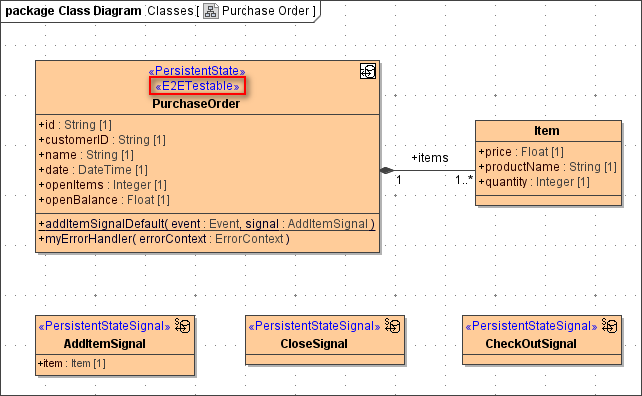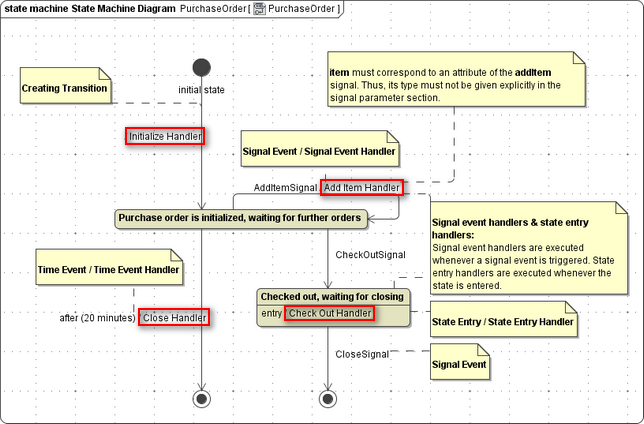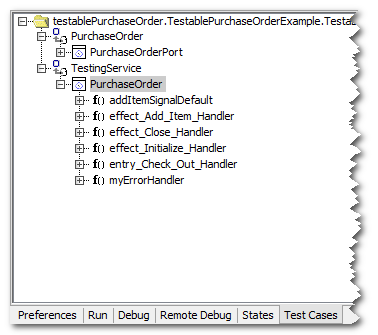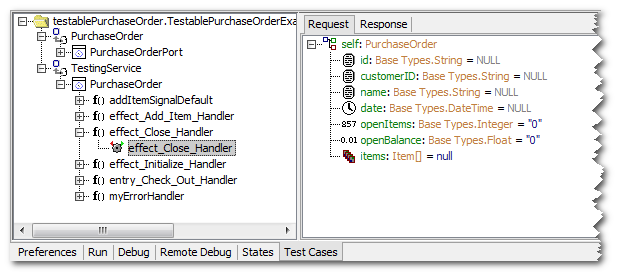The usage of the stereotype <<E2ETestable>> is allowed on persistent state classes as described in the topics before.
Figure: Persistent State Class with Stereotype <<E2ETestable>>

Making persistent state classes testable gives the modeler the opportunity to test the activities implemented on the state transitions independently - without bothering about the persistent state database.
Testing a persistent state class by the use of <<E2ETestable>> will not affect the persistent state database.
Figure: State Machine Diagram of Purchase Order

The E2E Builder generates test operations to test all activities related to the persistent state class, which are
-
operations defined on the class itself (e.g. addItemSignalDefault and myErrorHandler)
-
activities related to transitions (e.g. Add Item Handler, Close Handler and Initialize Handler, marked in red in the figure above)
-
entry state and exit state activities (e.g. Check Out Handler, marked in red in the figure above)
-
do activities
Figure: Generated Testing Interface for Persistent State Class PuchaseOrder

The test interface for a normal signal transition will present as shown below. All persistent state related test cases will get the self context of the persistent state class in order to enter data relevant for testing.
Figure: Transition Test Case

The table below shows an overview of all activities, their generated default names within the testing interface and the request parameters offered by the related test cases.
|
Persistent State Activity |
Generated Default Name |
Example Reference |
Request Parameters |
|---|---|---|---|
|
class operation |
<name of the operation> |
addItemSignalDefault |
|
|
transition / signal |
effect_<name of the activity> |
effect_Add_Item_Handler |
|
|
entry and exit state |
entry_<name of the activity>
|
entry_Check_Out_Handler |
|
|
do activity |
doActivity_<name of the activity> |
|
